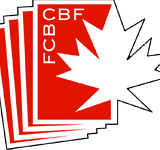The history of organized bridge in Canada is linked inextricably with the evolution of the American Contract Bridge League (ACBL). After the invention of contract bridge in 1925, players in Canada organized themselves into regional entities which eventually coalesced with larger organizations centered south of the border. Eastern-Central and Western Canada followed different paths. The former was always aligned with the ACBL, even before that organization became predominant in North America. Western Canada, on the other hand, was originally a part of the Pacific Bridge League which amalgamated with the ACBL in 1956.
By the 1960s Canadian membership in the ACBL had surpassed 10,000, due mainly to the stimulus provided by the league’s club and tournament programs. As much as Canadians enjoyed ACBL bridge they still lacked an organization that linked them directly. And so the Canadian Bridge Federation (CBF) came to fill this void.
The impetus for creating the CBF was the introduction of the 1960 World Bridge Olympiad created by the fledgling World Bridge Federation. This was a competition where each country would be represented by its own national team. By then, Canadian experts such as Eric Murray, Sammy Kehela, Bruce Elliott, and Percy Sheardown had made their mark on the North American scene. They, and a younger phalanx of budding Canadian superstars, took up the challenge of playing for Canada. Canada’s effort at the first Olympiad was moderately successful. Things improved in 1964 when our country finished an impressive fourth. It soon became obvious that some sort of entity was needed to organize national competition for selection of our international teams, and, if possible, to provide them with both moral and financial support. Eric Murray, whose energy and drive are legendary, was the prime instigator of the new, as yet unnamed, organization. The organization began as an informal coast-to-coast network of supporters which gradually evolved into a more concrete structure.
Canadian ACBL units responded favourably to Murray’s plans to build a formal organization. Meetings on this theme were held whenever bridge players gathered. At the 1965 Nationals (now called North American Bridge Championships) in Chicago, a group of Canadian organizers and enthusiasts, led by Murray, made the historic decision to create the CBF. This would be a voluntary association of Canadian ACBL units where each member unit would decide the level of its financial contribution. Besides Murray, the Chicago group included: Henry Smilie (Vancouver); Doug Cannell (Winnipeg); Chuck Jane (Woodstock); Bill Robinson (Toronto); Al Lando (Toronto); Doug Drew (Toronto); Aaron Goodman (Montreal); and Don Dobson (Halifax). Together, these individuals represented more than 80% of Canadian ACBL members.
A strategy meeting was held at Murray’s Toronto home following the Chicago Nationals. There, the founders of the CBF (Murray, Jane, Drew, Lando, Robinson and Cannell), decided to hold a further meeting with official unit representatives at the Denver Nationals in 1966. The founders would present a plan for the formation and structure of the CBF, to be approved by unit officials. The latter would provide further direction on policies governing selection of our international teams through national trials, and funding of selected players.
Chuck Jane undertook the mammoth task of devising the first trials format and organizing a nationwide group of volunteers to conduct local events for qualification to a national final. The CBF’s first play-down culminated in a national final held in Winnipeg in September, 1967.
The CBF has grown and changed since those early years. The CBF now represents all Canadian players, not just champions vying for international competition, and offers programs that have broader appeal such as flighted national championships, rookie-master games, and a magazine tailored to a wider readership. Furthermore, in 1990 the CBF became a membership organization in addition to being a federation of Canadian ACBL units.
Canadians can be proud of the CBF and its 50+ year history. Looking ahead, the future of the organization will depend in large measure on the continued support of an informed membership.


